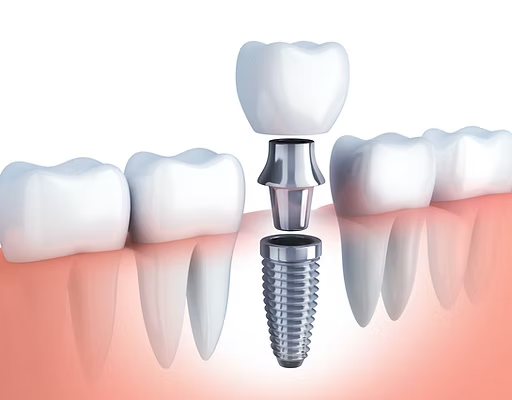What is a dental implant?
Implants are the most natural alternative to replace a lost tooth. They simulate an artificial root made of biocompatible titanium that is attached to the maxillary or mandibular bone through a process called osseointegration.
At Dental Isilla we work exclusively with the implant that leads the market in quality and experience. Implants whose Titanium and Zirconium alloys provide greater resistance to fracture than its competitors. The surface with which the implant we use in our center is treated, makes it possible to reduce the osseointegration times compared to other implants.

What does the treatment consist of?
We prepare the bone to be treated in the surgery. Sometimes, due to the lack of space to place the implant, a previous bone graft is required, and a maturation process of between 6 and 8 months.
2. Once the tissues are in optimal conditions, the oral surgeon will place the dental implant in the bone bed.
3. Removal of sutures (stitches) one week after placement.
4. Osseointegration (bone is created around the surface of the dental implant). This process, the duration of which varies according to each patient, helps to provide a solid base for the new artificial tooth.
5. Taking of measurements 10 weeks after the implant placement. A record will be taken of the patient’s mouth, so that the prosthetic laboratory can proceed to the fabrication of the future piece to be replaced.
6. Restorative Phase: 3 or 4 weeks after taking the measurements, we proceed to place the definitive porcelain restoration.
Benefits
We prepare the bone to be treated in the surgery. Sometimes, due to the lack of space to place the implant, a previous bone graft is required, and a maturation process of between 6 and 8 months.
Once the tissues are in optimal condition, the oral surgeon will place the dental implant in the bone bed.
Removal of sutures (stitches) one week after placement.
Osseointegration (bone is created around the surface of the dental implant). This process, which varies in duration depending on each patient, helps to provide a solid foundation for the new artificial tooth.
Measurements are taken 10 weeks after the implant placement. A record will be taken of the patient’s mouth, so that the prosthetic laboratory can proceed to the fabrication of the future piece to be replaced.
Restorative Phase: 3 or 4 weeks after taking the measurements, we proceed to place the definitive porcelain restoration.
Inconveniences
Bone factor. If there is not an adequate distance to certain vital structures (such as the dental nerve or paranasal sinuses) and a good volume, sometimes it is better to evaluate other possibilities.
Surgery is required for its placement, which may entail normal post-surgical reactions, such as inflammation of the area and swelling, which will last for a few days.
Longer periods of time until we replace the pieces with respect to other treatments. From the moment we start the implant placement process, it can take from 4 to 6 months until we place the dental pieces on implants.
